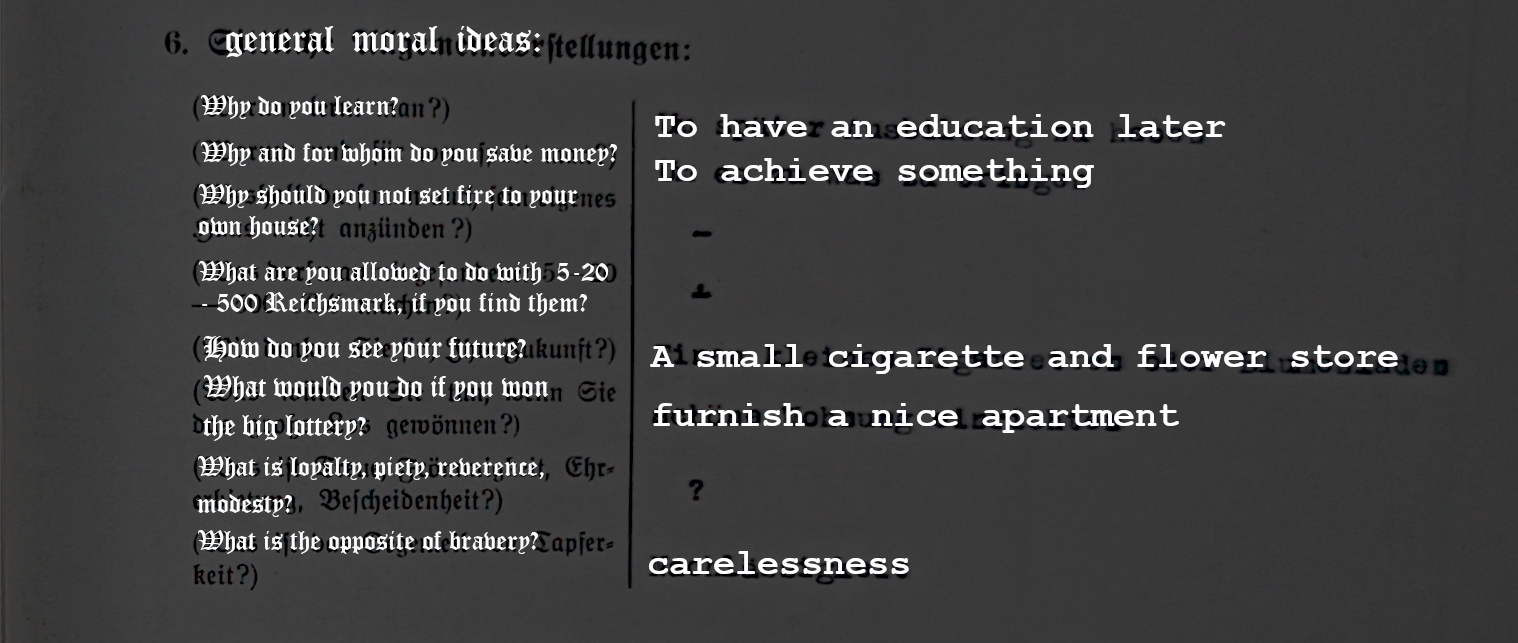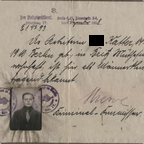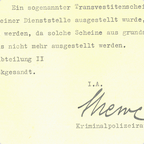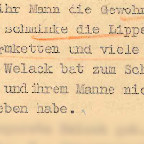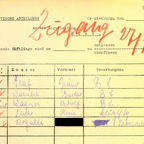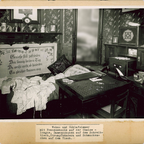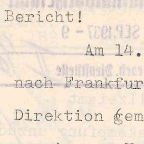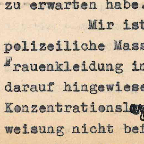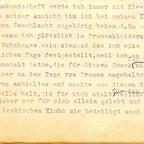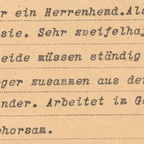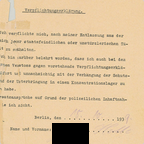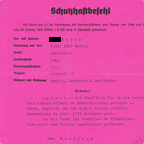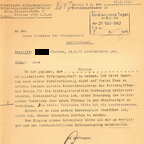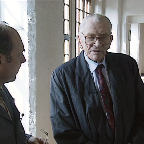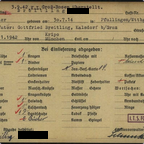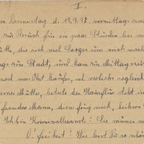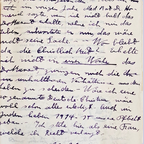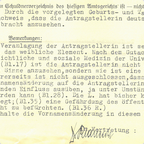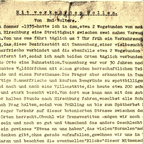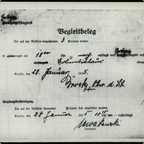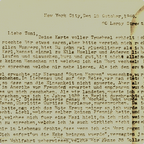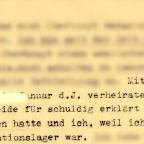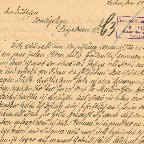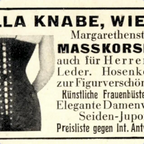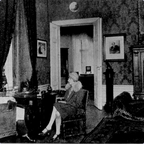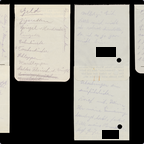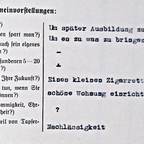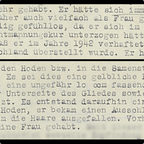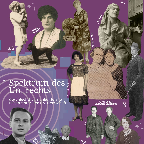Forced Sterilization
![pre-printed form with various questions on the left side. Answers are typed with a typewriter. 6. general moral ideas: Why do you learn? [To have an education later]; Why and for whom do you save? [To achieve something]; Why should you not set fire to your own house? [-]; What are you allowed to do with 5-20-500 Reichsmark, if you find them? [+]; How do you see your future? [A small cigarette and flower store]; What would you do if you won the big lottery? [furnish a nice apartment]; What is loyalty, piety, reverence, modesty? [?]; What is the opposite of bravery? [carelessness].](/media/images/intelligenzbogen_wundsch_MtzLl.scale-100.jpegquality-100.png)
© Hamburg State Archives.
Section from Wündsch's "Intelligence Test Form"

Private photo approx. beginning of 1970s, © Jako Wende.
This section from the so-called "Intelligenzprüfungsbogen" (intelligence test form) was filled out by a doctor during *Anni Wündsch's assessment for sterilization at the Langenhorn State Hospital. *Anni had been forcibly admitted to this psychiatric hospital in order to be examined as part of a procedure at the "Erbgesundheitsgericht" (Hereditary Health Court). She had previously fled the threat of sterilization from the "Versorgungsheim Farmsen" (Farmsen provision home), a closed workhouse for people who were branded "anti-social".
On April 3, 1935, *Anni was sterilized in the Eppendorf University Hospital by order of the "Erbgesundheitsgericht". In the report, the doctor described her as "feeble-minded from birth". He had described her femininity in detail as a symptom of her alleged "idiocy".
During the Nazi regime, around 600.000 people were forcibly sterilized. They were actively excluded from reproduction within the "Volkskörper" (national body). This included many people deemed "disabled". According to the "Erbgesundheitsgesetz" (Hereditary Health Act), in force from January 1, 1934, people with "congenital feeble-mindedness" were sterilized most often. A large number of socially undesirable behaviours could fall into this category. Even people viewed as "asocials" and "psychopaths" could be sterilized in this way. The so-called "Lebensbewährung" (probation of life) was crucial during the assessment. This included the measurement of intelligence and was very gender specific: for men, the ability and willingness to do wage work was seen as crucial, and for women, the ability and willingness to do reproductive work was seen as important. Sexual freedom could be an argument for sterilization, especially among women.

